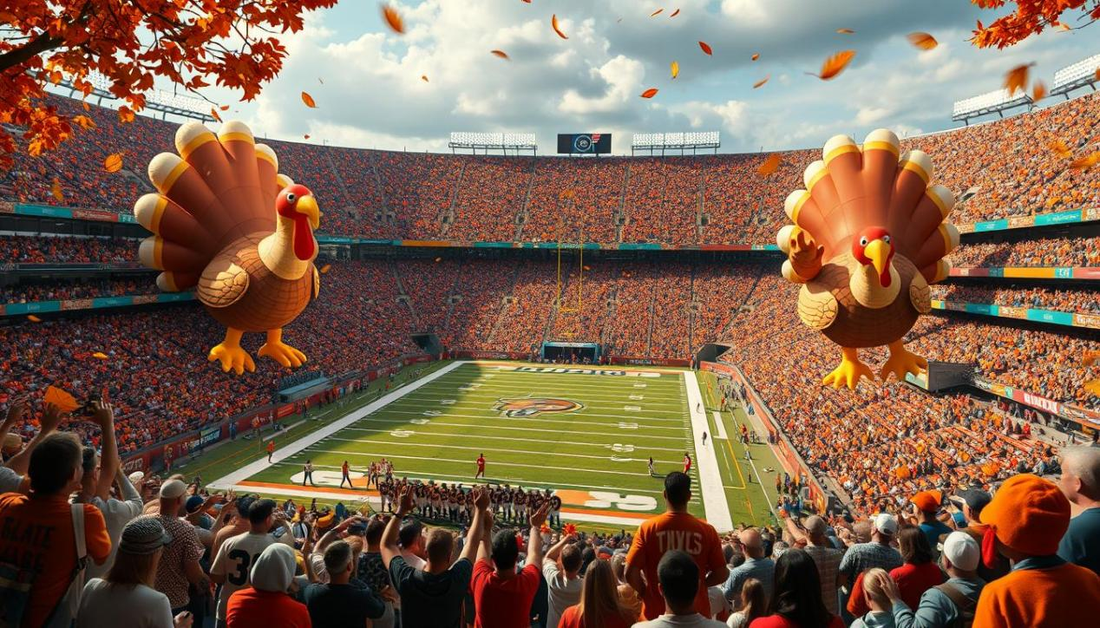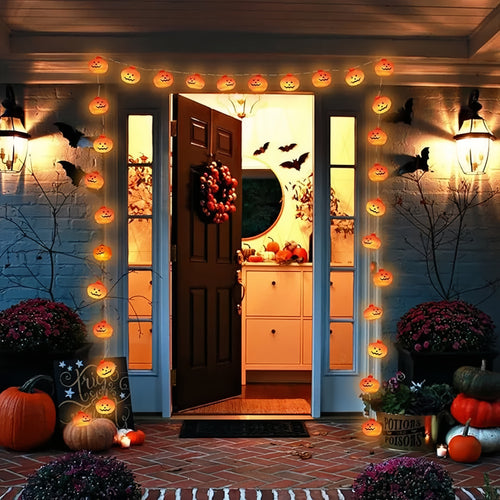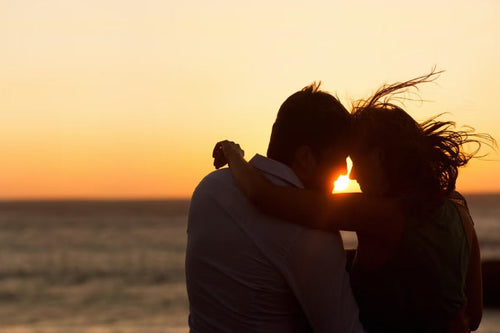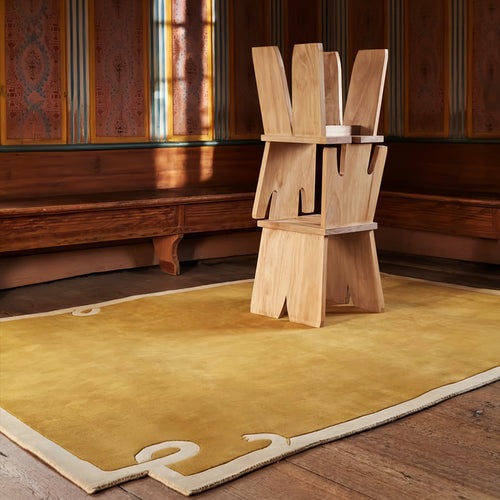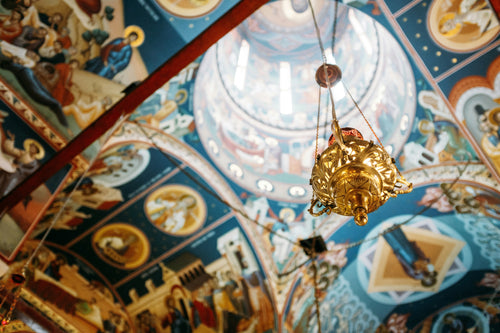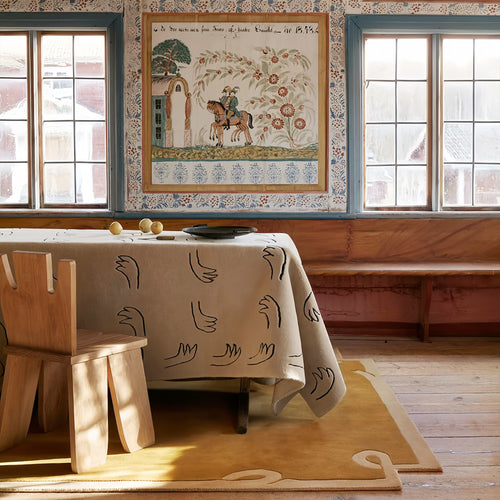Have you wondered about the true meaning behind Thanksgiving? It’s more than just turkey and decorations. The history of Thanksgiving mixes gratitude, survival, and America’s complex identity. Across the country, families gather to enjoy the harvest festival feast. This celebration makes us think about the origins of Thanksgiving Day.
In the autumn of 1621, the Pilgrims and Wampanoag people shared a big meal. This event is seen as the start of the American Thanksgiving tradition. The path from a harvest fest to a national holiday was not easy. It’s filled with stories of Native American persistence and European settlers’ expansion.
Sarah Josepha Hale worked hard, and President Abraham Lincoln made a call. They wanted to unite a country divided by war. Thus, Thanksgiving Day was created during a tough time. Over time, it grew into a day for giving thanks, understanding our history, and coming together.
In Plymouth, close to where the first feast was, the Wampanoag people remember their ancestors. They don't celebrate but solemnly acknowledge the past and its impact today. This shows the complex meanings of Thanksgiving in different communities. It highlights the need to know our history along with enjoying Thanksgiving traditions.
Every year, as we enjoy meals and watch football, we're also reminded of a story of coming together and having different views. Let’s explore the many sides of Thanksgiving and learn what shaped today’s celebrations.

A warm, nostalgic scene depicting the first Thanksgiving feast, featuring a cozy gathering of Pilgrims and Native Americans sharing a bountiful table filled with traditional foods like turkey, corn, and pumpkin pie, surrounded by autumn foliage and a setting sun casting a golden hue over the landscape.
Key Takeaways
- Understanding the origins and transformation of Thanksgiving throughout American history.
- Recognizing the dual nature of Thanksgiving as both a unifying national holiday and a reminder of past injustices.
- Acknowledging the role of influential figures in institutionalizing Thanksgiving as a national day of gratitude.
- Appreciating the significance of Thanksgiving traditionsand their evolution over time.
- Reflecting on the diverse perspectives that contribute to the contemporary celebration of Thanksgiving Day.
The Historical Roots of Thanksgiving Day
Thanksgiving Day's origins are found in important historical events and traditions in North America. It's a day of thanks that goes back centuries. It includes traditions from both the early settlers and native communities.
Beginnings in Plymouth: The 1621 Harvest Celebration
The first feast Americans call first Thanksgiving was in 1621. It was a big harvest celebration by the Pilgrims in Plymouth. They were celebrating a successful growing season. The Wampanoag tribe, crucial for the colonists' survival, joined in this three-day event. This get-together was more than food. It showed the Pilgrims and Wampanoag working together, showing how their relationship was complex.
Cultural and Religious Practices of New England Colonists
Religion was very important to the New England colonists. These settlers often held Thanksgivings for special events. These events included good harvests or the end of droughts. But these Thanksgivings were not like today's celebrations. They were serious times for prayer and giving thanks to God.
Canada's First Thanksgiving: Frobisher's 1578 Ceremony
Canadian Thanksgiving also has deep historical roots, even before Plymouth's feast. In 1578, Martin Frobisher, an English explorer, had a ceremony in what is now Nunavut. He was giving thanks for his fleet's safe journey. This was similar to older European harvest festivals. It was about being thankful for survival and good fortune in the New World.
The Thanksgiving tradition is a mix of religious dedication and thanks for good harvests. It's also about trying to work together across cultures. Over time, Thanksgiving has taken parts from different harvest celebrations. It's a celebration full of happiness and thoughtful reflection on its history.
Why Do We Celebrate Thanksgiving
In the middle of the Civil War, on October 3, 1863, Abraham Lincoln announced a national Thanksgiving Day. He wanted Americans to pray for those affected by the war. This call was not just for giving thanks but aimed at bringing unity during a divided time.
The National Holiday Declared by Abraham Lincoln
Abraham Lincoln made Thanksgiving a national holiday in 1863, during the Civil War. It was a thoughtful move to help the country come together. He chose the last Thursday in November to express gratitude and encourage healing. This created a common tradition that united people from different backgrounds.
Thanksgiving as a Symbol of National Unity
Thanksgiving has grown beyond its original purpose to become a key part of American culture. It now highlights the importance of welcoming everyone, celebrating the country's rich diversity. The holiday reflects the unity and peace Lincoln hoped for, involving even those who have recently made the U.S. their home.
Nowadays, national Thanksgiving Day is a time for all Americans to reflect on our past and appreciate our unity. Every November, we gather with loved ones to express our thanks. This celebration of togetherness is essential to American culture and identity.
The Cultural Significance of Thanksgiving Day Parades
The Macy’s Thanksgiving Day Parade kicks off the holiday season. It's a huge part of American parade tradition. Since 1924, it has become a display of joy, attracting millions with its colorful scenes. It deeply impacts how the nation celebrates the holidays.
This parade has always been about celebrating community and fun. It’s one of the oldest Thanksgiving parades. It features big balloons, amazing floats, and performances that highlight the holiday joy. It's broadcast nationwide, letting people enjoy the festivities from anywhere. They feel connected to the excitement on New York City streets.
|
Year |
Viewership Milestones |
|
1924 |
First parade with over a quarter million spectators |
|
1933 |
Viewership grew to over 1 million |
|
1947 |
Gained wider recognition with the movie Miracle on 34th Street |
|
2016 |
Approximately 24.639 million TV viewers |
The parade shines with its splendor and creativity every year. It brings people together, sharing a moment of happiness. Folks of all backgrounds unite to enjoy this amazing event. They join in the spirit of the holidays, whether in person or watching from afar.
- Macy's Thanksgiving DayParade is a ritual display that brings about a sense of nostalgia and enchantment, echoed through each giant balloon and performer.
- The inclusion of current cultural characters into the parade reflects its ability to evolve while respecting beloved traditions.
- Family gatherings on Thanksgiving morning to watch the parade broadcast has become a cherished tradition, passing down from one generation to the next.

A vibrant scene of the Macy’s Thanksgiving Day Parade, featuring giant colorful balloons of famous characters floating above a bustling city street, surrounded by cheerful spectators in winter attire, festive floats adorned with autumn decorations, and the iconic Macy's storefront in the background, all set against a clear blue sky.
With every year, the Macy’s Thanksgiving Day Parade celebrates the season. It honors America's culture and entertainment. It keeps enchanting and bringing people together worldwide. This tradition is a valued part of America's holiday celebrations.
The Evolution of Thanksgiving Traditions
American Thanksgiving traditions are as old as the nation. This holiday has changed a lot over centuries. It went from quiet pilgrim harvest celebrations to the lively Thanksgivings we see today. These include football games and big parades.
Pilgrims and Wampanoag: From Harvest Feast to Football
The first Thanksgiving in 1621 was a feast shared by Pilgrims and the Wampanoag tribe. It celebrated a successful harvest. Today's meals are different, with turkey and cranberries. But that first gathering was more than a meal. It was about friendship and respect. This helped shape Thanksgiving's focus on coming together.
The tradition of watching football on Thanksgiving started in 1876 with the Yale vs. Princeton game. It brought a thrilling twist to the holiday. Now, football games are a key part of Thanksgiving. They show Americans' love for joy and togetherness on this day.
From Colonial Thanksgivings to Modern Day Festivities
Over time, Thanksgiving changed from just a religious day to include everyone. Abraham Lincoln made it a national holiday during the Civil War. He wanted it to be a time of gratitude. But also to help heal a nation divided.
|
Year |
Event |
Impact |
|
1621 |
First Thanksgiving with the Pilgrims and Wampanoag |
Start of a harmonious intercultural celebration |
|
1863 |
Proclamation by Abraham Lincoln |
Thanksgiving declared a national holiday |
|
1876 |
Inaugural Yale vs. Princeton football game |
Introduced Thanksgiving Day sports into culture |
|
1941 |
Official date set by Congress |
Cemented the fourth Thursday of November for Thanksgiving |
|
1989 |
Presidential turkey pardon tradition begins |
Added a quirky yet beloved ritual to the holiday's observance |
Thanksgiving has evolved a lot. It moved from the solemn early days to today's festive celebrations. We now have parades and football games, like Yale vs. Princeton. These show how the holiday brings people together.
Thanksgiving Dinners: A Journey through Time
Exploring the evolution of Thanksgiving dinner reveals much about America's history. From a humble feast between Pilgrims and Native Americans to today's grand meals, the menu has evolved. It reflects gratitude and the richness of the land.
Turkey and Trimmings: America's Thanksgiving Plate
The Thanksgiving turkey, stuffing, and cranberry sauce are at the heart of the celebration. An impressive 88% of Americans eat turkey on this holiday, says the National Turkey Federation. Alongside the turkey, people enjoy mashed potatoes, green beans, and pumpkin pie, resulting in an average of 4,500 calories per person.
Early celebrations also had turkey but included venison and local fowl. The preference for turkey grew because it was native to North America and fed many people.
The Influence of Native American Cuisine on Thanksgiving
Native American foods and cooking methods have greatly influenced Thanksgiving menus. The first feast showcased corn, squash, and wild game, showing Native American impact on settler diets. Corn became a staple, used in dishes like cornbread and succotash.
The technique of slow-roasting turkey, often in leaves, is from indigenous cooking. This highlights the Native American role in Thanksgiving's culinary traditions.
Now, as families across America celebrate Thanksgiving, we remember the first feast. This event honors the legacy of both Pilgrims and Native Americans. Their unlikely celebration of survival and thanks started one of America's favorite holidays.
|
Year |
Event |
Dish |
|
1621 |
First Thanksgiving |
Wild fowl, venison |
|
1863 |
Thanksgiving Declared National Holiday |
Turkey becomes central |
|
Today |
Modern Thanksgiving |
Turkey, stuffing, cranberry sauce |
The Role of Thanksgiving in American Sports Culture
The United States loves combining sports with holidays, especially evident during Thanksgiving. Millions watch the NFL Thanksgiving games, a key part of the holiday. These games highlight football's role in culture and the uniting power of sports.

A vibrant football stadium filled with enthusiastic fans wearing Thanksgiving-themed apparel, large inflatable turkeys in the stands, players on the field in colorful NFL uniforms, autumn leaves falling from trees surrounding the stadium, with a festive atmosphere and Thanksgiving decorations adorning the venue.
The NFL Thanksgiving tradition started small but now is a Thanksgiving highlight. It shows how sports trends have grown. The NFL used to have six games on Thanksgiving. Now, it hosts three big games that draw nationwide attention.
In 2022, the Dallas Cowboys versus New York Giants game was a milestone. It attracted 42.1 million viewers, setting a record for regular-season NFL games. This high viewership shows how vital these games are to Thanksgiving.
High school football also plays a big part in the holiday. Many games, known as Turkey Day Games or Turkey Bowls, have traditions going back over 100 years. These games are especially big in the Northeast, sparking local community celebrations.
|
High School |
Wins |
Rival School |
|
Lincoln High School |
38 |
San Jose Big Bone Game |
|
Galileo High School |
16 |
San Francisco Turkey Bowl |
|
Ansonia High School |
72 |
Naugatuck High School |
|
New Canaan High School |
14 |
Darien High School |
|
Norwich Free Academy |
78 |
New London High School |
|
Stonington High School |
50 |
Westerly High School |
The Detroit Lions and Dallas Cowboys started playing on Thanksgiving in 1934 and 1966. Their games have won millions of fans for the teams. High school matches, like Norwich Free Academy vs. New London High School, show excitement similar to professional games.
NFL Thanksgiving games tie together football, tradition, and celebration. They show how sports are a key part of America's holidays, bringing people together.
Thanksgiving Day Proclamations and Controversies
Thanksgiving history is full of national proclamations and political views. This shows the link between our national identity and holiday celebrations. Many presidents have impacted this holiday with their declarations and actions.
Presidential Proclamations: From Washington to Roosevelt
George Washington started the tradition of Thanksgiving proclamations in 1789. He declared a national Thanksgiving Day. This set the stage for future leaders. But not all presidents followed this tradition. Thomas Jefferson did not declare Thanksgiving because he believed in separating church and state. This shows the different views on Thanksgiving and its national recognition.
Franklin D. Roosevelt moved the holiday to the third Thursday in November in 1939 for economic reasons. This caused a lot of debate and confusion. Congress stepped in in 1941. They made a law setting Thanksgiving on the fourth Thursday of November. This event shows how economic and political thoughts can change national celebrations.
The Political History of Thanksgiving and National Acknowledgment
Thanksgiving reflects the changing political landscape of the United States. Lincoln called for unity in his 1863 proclamation during the Civil War. Later, other presidents highlighted American values and history on this holiday. This mix of celebration and controversy shows how Thanksgiving reflects America's political climate over time.
The table below shows key moments in Thanksgiving proclamation history:
|
Year |
President |
Action |
|
1789 |
George Washington |
First national proclamation of Thanksgiving |
|
1801 |
Thomas Jefferson |
Refused to declare Thanksgiving |
|
1863 |
Abraham Lincoln |
Declared Thanksgiving a national holiday |
|
1939 |
Franklin D. Roosevelt |
Moved Thanksgiving to third Thursday of November |
|
1941 |
Congress |
Settled Thanksgiving on the fourth Thursday of November |
This progression highlights how Thanksgiving has been woven with American politics and ideals. It reflects our ongoing conversation between national values and loved traditions.
Thanksgiving Around the World: Variations and Parallels
Thanksgiving is a special time to show gratitude for the year’s harvest. It is celebrated in many forms across the world. While many know about American Thanksgiving, similar celebrations happen in other countries too. These celebrations are influenced by harvest festivals and feelings of thanks.
Canadian Thanksgiving Traditions and Origins
Canadian Thanksgiving has a unique history, similar yet different from the American version. It takes place on the second Monday of October. It combines European gratitude traditions with Canadian culture. The Canadian Parliament recognized it officially in 1879. But its roots go back to early European settlements in Canada, celebrating the harvest.
International Harvest Festivals Similar to Thanksgiving
Around the world, many countries have their own Thanksgiving-like traditions. These celebrations are all about being thankful for a good harvest. In Germany, they celebrate ‘Erntedankfest’ in early October. It's a bit like Canadian Thanksgiving but with German traditions.
In Asia, countries like China and Japan have their own ways of expressing thanks. They mix gratitude with local customs. For example, the ‘Moon Festival’ in China and Vietnam is about family and thanking the moon. It captures the spirit of harvest celebrations.
In Europe, Thanksgiving-style events are common too. The Netherlands has been holding Thanksgiving services since the 1600s. This shows a deep connection to Thanksgiving that goes back even before the American version began. It's interesting to see how these traditions compare.
In other places, like Liberia and Norfolk Island, October Thanksgiving celebrations show how these traditions can change. Liberia celebrates gratitude along with freedom. Norfolk Island, on the last Wednesday in November, is influenced by American traditions. This shows Thanksgiving's themes are flexible and widespread.
International Thanksgiving traditions share a common feeling of gratitude. From Canada's chilly October to Europe's autumn warmth, Thanksgiving unites us. It's a time of global unity, reflection, and happiness. All around the world, people celebrate the harvest and the joy of being thankful together.
Conclusion
Thanksgiving is more than just a holiday. It is a key part of American culture. It reminds us of our history and the values we share. Holidays like this are not just days off. They are chances to think about our past and our goals as a nation.
The Mayflower's journey is a bold story of seeking freedom. Abraham Lincoln and Franklin D. Roosevelt made Thanksgiving official. Despite changes over time, its essence remains.
The traditional Thanksgiving meal ties us to the first feast. Remember, Squanto and Chief Massasoit's men helped the settlers survive. This shows the importance of working together. Today, Thanksgiving amplifies this spirit of gratitude and unity.
The story from the Pilgrims' voyage to the Macy's Parade shows celebration. It highlights our ability to overcome challenges together.
Thanksgiving's meaning continues to grow while keeping its heart the same. It celebrates being together and giving thanks. The stories show the resilience of Americans and the strength of our community. Every year, on the fourth Thursday of November, we remember these ideals. We keep the spirit of Thanksgiving alive in America.
FAQ
1. What Is the History of American Thanksgiving?
American Thanksgiving began in 1621 at Plymouth with a feast shared by the Pilgrims and the Wampanoag people. This feast marked the first harvest celebration. Today, it has grown into a holiday that celebrates the year's blessings.
2. What Is the History of American Thanksgiving?
“British Thanksgiving traces its roots to the annual harvest festivals, which have been celebrated across the British Isles since ancient times, reflecting a longstanding tradition of communal gratitude for bountiful harvests and the end of the agricultural year.”
“Unlike the American Thanksgiving, which commemorates the Pilgrims’ harvest celebration in 1621, British Thanksgiving finds its origins in medieval harvest festivals and the annual ‘Harvest Home’ celebrations, with each region preserving its own unique rituals and customs.”
3. How do British people celerate Thanksgiving?
“British people celebrate Thanksgiving with a blend of traditional harvest festivals and modern customs, often gathering with family and friends to enjoy a meal featuring seasonal produce, such as roasted root vegetables, game meats, and hearty pies, while giving thanks for the year’s blessings.”
“In the UK, Thanksgiving is marked by community events, church services, and family gatherings, where people express gratitude for the harvest and the year’s successes, often incorporating elements of local customs and regional agricultural traditions.”
As families gather to celebrate Thanksgiving, they often adorn their homes with festive decorations such as string lights, vibrant autumn leaves, and charming pumpkin decor, creating a warm and inviting atmosphere that reflects the spirit of gratitude.
4. How Did Thanksgiving Day Begin in Plymouth?
In 1621, English colonists and the Wampanoag people celebrated their harvest together for three days. The meal likely had fowl, venison, and vegetables.
5. What Are Some Cultural and Religious Practices of New England Colonists Related to Thanksgiving?
Colonists in New England celebrated "Thanksgivings” to thank God. These were for things like military wins or the end of a drought. These days were separate from harvest feasts.
6. When Did Canada Celebrate Its First Thanksgiving?
Martin Frobisher held Canada's first Thanksgiving in 1578. It took place in today's Nunavut to thank for his fleet's safety.
7. Why Was Thanksgiving Declared a National Holiday By Abraham Lincoln?
Abraham Lincoln made Thanksgiving a national holiday in 1863, during the Civil War. It aimed to unite Americans and give thanks during tough times.
8. How Does Thanksgiving Serve as a Symbol of National Unity?
Thanksgiving became a tradition of peace and unity. It brings together Americans of all backgrounds to celebrate together.
9. Why Are Parades a Cultural Significance of Thanksgiving?
Thanksgiving parades, like Macy’s Thanksgiving Day Parade started in 1924, show unity. They start the holiday season with a festive spirit.
10. How Have Football and Sports Become Integrated into Thanksgiving?
Football became a Thanksgiving tradition after a 1876 Yale vs. Princeton game. Now, sports, especially football, are key to the holiday, offering fun and competition.
11. What Foods Comprise A Traditional American Thanksgiving Dinner?
Traditional Thanksgiving meals feature turkey, stuffing, cranberry sauce, and various vegetables like potatoes, corn, and green beans. Pumpkin pie is a must for dessert. These foods, native to America, show the holiday's richness.
12. How Has Native American Cuisine Influenced Thanksgiving?
Thanksgiving foods are deeply influenced by Native American cuisine. Corn, squash, and turkey, prepared in traditional ways, are staples of the feast.
13. What Is the Role of Thanksgiving in American Sports Culture?
Thanksgiving and sports, especially football, are entwined in America. College games and NFL matches on this day showcase the country's sports passion.
14. Can You Explain the Thanksgiving Day Proclamations and Subsequent Controversies?
Thanksgiving's history is complex, beginning with George Washington's national call to celebrate. Later, figures like Thomas Jefferson chose not to declare it, showing its political nuances.
15. How is Canadian Thanksgiving Different from American Thanksgiving?
Canadian Thanksgiving happens on the second Monday of October. It shares European harvest gratitude roots and has been recognized officially since 1879, although its dates have changed over time.
16. Are There International Celebrations Similar to Thanksgiving?
Many cultures celebrate harvest festivals or thanksgiving days, like the UK's Harvest Festival and others in Liberia, the Netherlands, and Saint Lucia. Each culture has its own unique way of giving thanks.
17. What date is thanksgiving 2025?
American Thanksgiving in 2025
In the United States, Thanksgiving is celebrated on the fourth Thursday of November each year. This tradition was solidified when President Abraham Lincoln proclaimed Thanksgiving a national holiday in 1863 to unite the nation during the Civil War. For the year 2025, American Thanksgiving will be on November 27, 2025. Americans typically celebrate this day with a large meal centered around a roasted turkey, along with side dishes like stuffing, mashed potatoes, cranberry sauce, and pumpkin pie. Parades, football games, and family gatherings are also integral parts of the American Thanksgiving experience.
UK Thanksgiving in 2025
In the United Kingdom, there isn’t a fixed “Thanksgiving” holiday in the same sense as in the United States. However, the concept of giving thanks for the harvest is often associated with Harvest Festival, which is usually celebrated around the time of the harvest moon, typically in September or October. Harvest Festival services are held in churches across the UK, where people bring in produce from the harvest to give thanks for the abundance. In 2025, Harvest Festival services will likely take place in September or October, but there isn’t a single, set date for the entire country. Each church or community may choose a date that suits them best within this general time frame.

